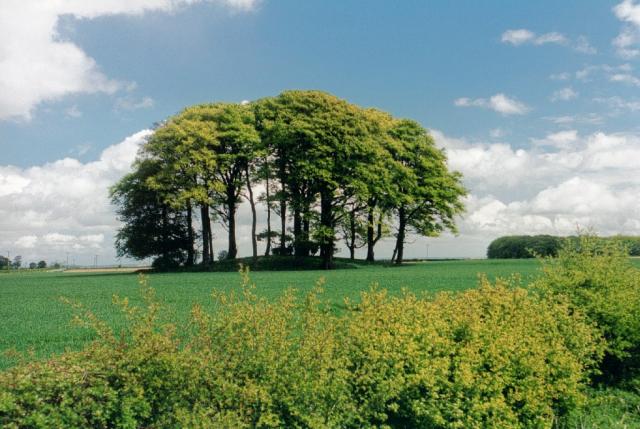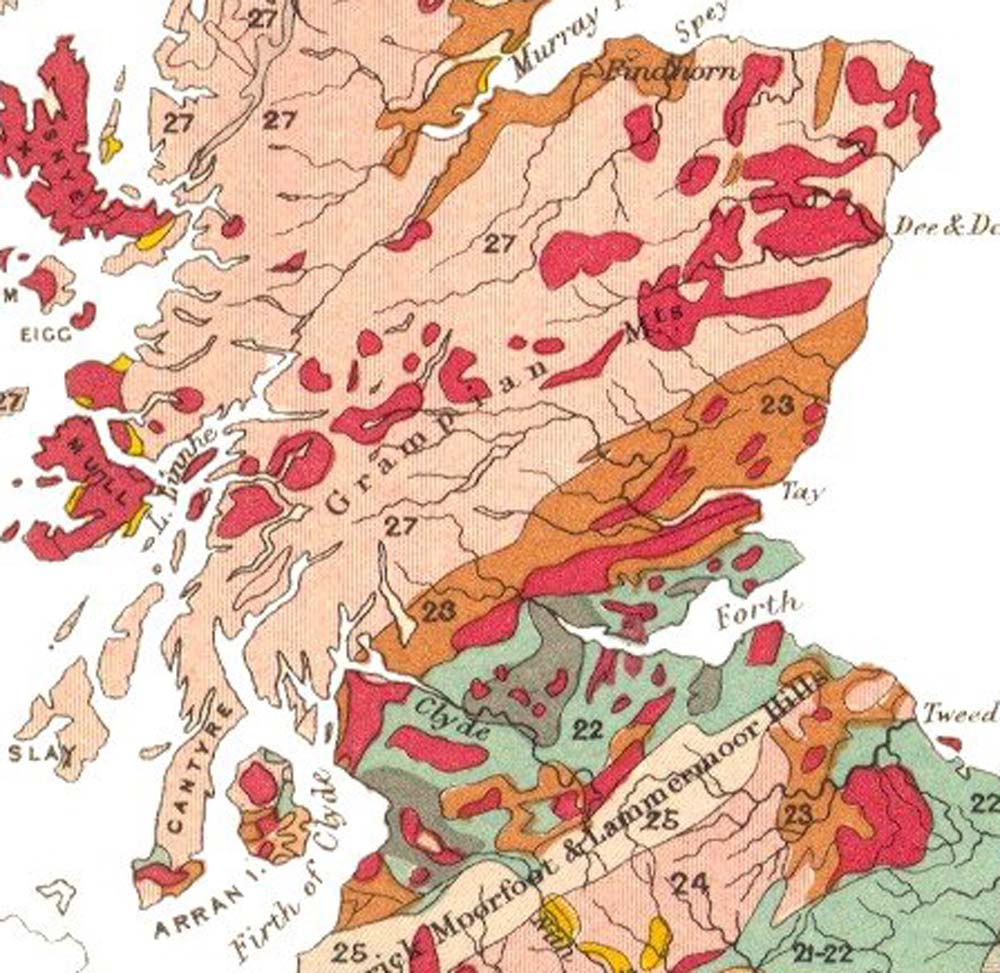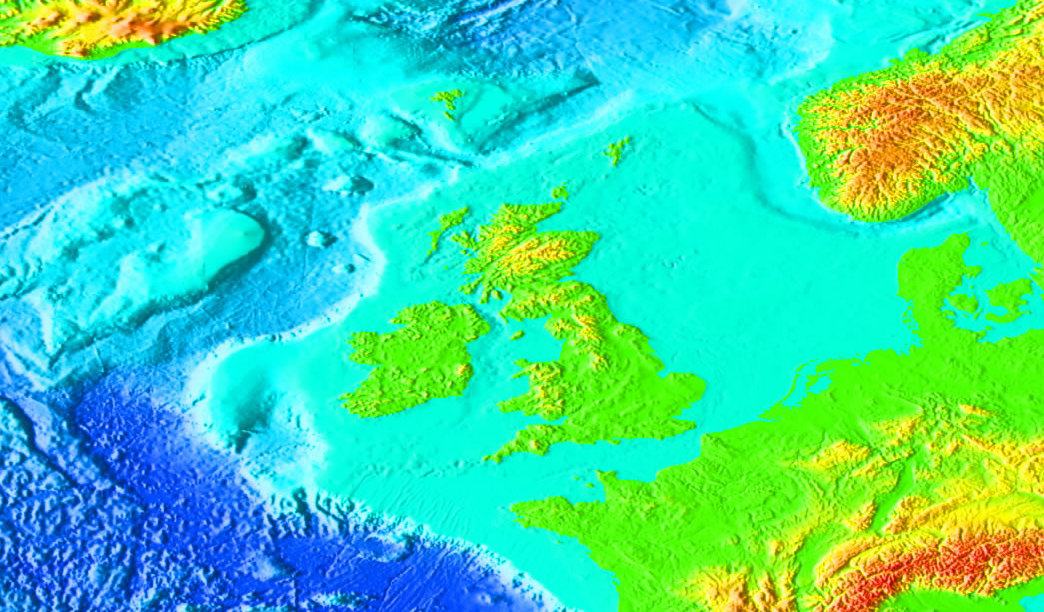|
Càrn Mòr Dearg
Càrn Mòr Dearg () is the ninth-highest mountain in Scotland and the British Isles, with a height of . It stands a short distance northeast of Ben Nevis, the highest mountain in Britain, to which it is linked by the 'Càrn Mòr Dearg arête'. Along with Càrn Dearg Meadhanach ('middle red peak') and Càrn Beag Dearg ('little red peak'), it makes up the eastern ridge of the horseshoe-shaped Ben Nevis massif in the Scottish Highlands. Climbing The ascent of Càrn Mòr Dearg from the north (start from the North Face Car Park), the traverse of the arête, and the scramble up the north side of Ben Nevis make one of the best horse-shoe routes in Scotland. Snow sports Càrn Mòr Dearg is attractive to ski mountaineers and off piste skiers and boarders. In good conditions the summit can be reached from the nearby Nevis Range Ski areas in two hours or less. With enough snow, the descent from the summit to the CIC Hut gives a long, pleasant grade 1 descent. The eastern flank of the mount ... [...More Info...] [...Related Items...] OR: [Wikipedia] [Google] [Baidu] |
Ben Nevis
Ben Nevis ( ; gd, Beinn Nibheis ) is the highest mountain in Scotland, the United Kingdom and the British Isles. The summit is above sea level and is the highest land in any direction for . Ben Nevis stands at the western end of the Grampian Mountains in the Highland region of Lochaber, close to the town of Fort William. The mountain is a popular destination, attracting an estimated 130,000 ascents a year, around three-quarters of which use the Mountain Track from Glen Nevis. The cliffs of the north face are among the highest in Scotland, providing classic scrambles and rock climbs of all difficulties for climbers and mountaineers. They are also the principal locations in Scotland for ice climbing. The summit, which is the collapsed dome of an ancient volcano, features the ruins of an observatory which was continuously staffed between 1883 and 1904. The meteorological data collected during this period is still important for understanding Scottish mountain weather. C ... [...More Info...] [...Related Items...] OR: [Wikipedia] [Google] [Baidu] |
Scottish Highlands
The Highlands ( sco, the Hielands; gd, a’ Ghàidhealtachd , 'the place of the Gaels') is a historical region of Scotland. Culturally, the Highlands and the Lowlands diverged from the Late Middle Ages into the modern period, when Lowland Scots replaced Scottish Gaelic throughout most of the Lowlands. The term is also used for the area north and west of the Highland Boundary Fault, although the exact boundaries are not clearly defined, particularly to the east. The Great Glen divides the Grampian Mountains to the southeast from the Northwest Highlands. The Scottish Gaelic name of ' literally means "the place of the Gaels" and traditionally, from a Gaelic-speaking point of view, includes both the Western Isles and the Highlands. The area is very sparsely populated, with many mountain range A mountain range or hill range is a series of mountains or hills arranged in a line and connected by high ground. A mountain system or mountain belt is a group of mountain ran ... [...More Info...] [...Related Items...] OR: [Wikipedia] [Google] [Baidu] |
Mountains And Hills Of The Central Highlands
A mountain is an elevated portion of the Earth's crust, generally with steep sides that show significant exposed bedrock. Although definitions vary, a mountain may differ from a plateau in having a limited summit area, and is usually higher than a hill, typically rising at least 300 metres (1,000 feet) above the surrounding land. A few mountains are isolated summits, but most occur in mountain ranges. Mountains are formed through tectonic forces, erosion, or volcanism, which act on time scales of up to tens of millions of years. Once mountain building ceases, mountains are slowly leveled through the action of weathering, through slumping and other forms of mass wasting, as well as through erosion by rivers and glaciers. High elevations on mountains produce colder climates than at sea level at similar latitude. These colder climates strongly affect the ecosystems of mountains: different elevations have different plants and animals. Because of the less hospitable terrain and ... [...More Info...] [...Related Items...] OR: [Wikipedia] [Google] [Baidu] |
Marilyns Of Scotland
This is a list of Marilyn hills and mountains in the United Kingdom, Isle of Man and Ireland by height. Marilyns are defined as peaks with a prominence of or more, regardless of height or any other merit (e.g. topographic isolation, as used in Munros). Thus, Marilyns can be mountains, with a height above , or relatively small hills. there were 2,011 recorded Marilyns. Definition The Marilyn classification was created by Alan Dawson in his 1992 book ''The Relative Hills of Britain''. The name Marilyn was coined by Dawson as a punning contrast to the '' Munro'' classification of Scottish mountains above , but which has no explicit prominence threshold, being homophonous with (Marilyn) '' Monroe''. The list of Marilyns was extended to Ireland by Clem Clements. Marilyn was the first of several subsequent British Isles classifications that rely solely on prominence, including the P600s, the HuMPs, and the TuMPs. Topographic prominence is a more difficult to estimate than ... [...More Info...] [...Related Items...] OR: [Wikipedia] [Google] [Baidu] |
Munros
A Munro () is defined as a mountain in Scotland with a height over , and which is on the Scottish Mountaineering Club (SMC) official list of Munros; there is no explicit topographical prominence requirement. The best known Munro is Ben Nevis (Beinn Nibheis), the highest mountain in the British Isles at . Munros are named after Sir Hugh Munro, 4th Baronet (1856–1919), who produced the first list of such hills, known as ''Munro's Tables'', in 1891. Also included were what Munro considered lesser peaks, now known as Munro Tops, which are also over 3,000 feet but are lower than the nearby primary mountain. The publication of the original list is usually considered to be the epoch event of modern peak bagging. The list has been the subject of subsequent variation and as of 10 December 2020, the Scottish Mountaineering Club has listed 282 Munros and 226 Munro Tops. "Munro bagging" is the activity of climbing all the listed Munros. As of 31 December 2021, 7,098 people had repo ... [...More Info...] [...Related Items...] OR: [Wikipedia] [Google] [Baidu] |
Mountains And Hills Of Scotland
Scotland is the most mountainous country in the United Kingdom. Scotland's mountain ranges can be divided in a roughly north to south direction into: the Scottish Highlands, the Central Belt and the Southern Uplands, the latter two primarily belonging to the Scottish Lowlands. The highlands eponymously contains the country's main mountain ranges, but hills and mountains are to be found south of these as well. The below lists are not exhaustive; there are countless subranges throughout the country. Ben Nevis (Beinn Nibheis), the highest mountain in Scotland and the United Kingdom at , is in the Highland region at the western end of the Grampian Mountains. A Scottish mountain over is referred to as a Munro, of which there are 282. As of 2019, hundreds of thousands of people visit mountains in Scotland every winter and 130,000 climb to the summit of Ben Nevis every year. Highlands Scotland's main mountainous region can be broadly further split into the Northwest Highland ... [...More Info...] [...Related Items...] OR: [Wikipedia] [Google] [Baidu] |
List Of Munro Mountains
This is a list of Munro mountains and Munro Tops in Scotland by height. Munros are defined as Scottish mountains over in height, and which are on the Scottish Mountaineering Club ("SMC") official list of Munros. In addition, the SMC define Munro Tops, as Scottish peaks above that are not considered Munros. Where the SMC lists a Munro Top, due to "insufficient separation", it will also list the "Parent Peak", a Munro, of the Munro Top. As of 6 September 2012, there were 282 Scottish Munros after the SMC confirmed that Beinn a' Chlaidheimh had been downgraded to a Corbett and as of 10 December 2020, there were 226 Scottish Munro Tops after Stob Coire na Cloiche, a Munro Top to Parent Peak Sgùrr nan Ceathramhnan, was surveyed at 912.5m and was deleted as a Munro Top and downgraded to a Corbett Top. The current SMC list totals 508 summits. While the SMC does not use a prominence metric for classifying Munros, all but one of the 282 Munros have a prominence above , the exception ... [...More Info...] [...Related Items...] OR: [Wikipedia] [Google] [Baidu] |
Geology Of Scotland
The geology of Scotland is unusually varied for a country of its size, with a large number of differing geological features.Keay & Keay (1994) page 415. There are three main geographical sub-divisions: the Highlands and Islands is a diverse area which lies to the north and west of the Highland Boundary Fault; the Central Lowlands is a rift valley mainly comprising Palaeozoic formations; and the Southern Uplands, which lie south of the Southern Uplands Fault, are largely composed of Silurian deposits. The existing bedrock includes very ancient Archean gneiss, metamorphic beds interspersed with granite intrusions created during the Caledonian mountain building period (the Caledonian orogeny), commercially important coal, oil and iron bearing carboniferous deposits and the remains of substantial Palaeogene volcanoes. During their formation, tectonic movements created climatic conditions ranging from polar to desert to tropical and a resultant diversity of fossil remains. Scotla ... [...More Info...] [...Related Items...] OR: [Wikipedia] [Google] [Baidu] |
Arete (landform)
''Arete'' () is a concept in ancient Greek thought that, in its most basic sense, refers to 'excellence' of any kind Liddell, H.G. & Scott, R. ''A Greek–English Lexicon'', 9th ed. (Oxford, 1940), s.v.br>—especially a person or thing's "full realization of potential or inherent function." The term may also refer to excellence in " moral virtue." The concept was also occasionally personified as a minor goddess, Arete (not to be confused with the mythological Queen Arete), who, together with sister Homonoia, formed the ''Praxidikai'' ('Exacters of Justice'). In its earliest appearance in Greek, this general notion of excellence was ultimately bound up with the notion of the fulfillment of purpose or function: the act of living up to one's full potential. A person of arete is of the highest effectiveness; they use all of their faculties—strength, bravery, and wit—to achieve real results. In the Homeric world, arete involves all of the abilities and potentialities availa ... [...More Info...] [...Related Items...] OR: [Wikipedia] [Google] [Baidu] |
Munro
A Munro () is defined as a mountain in Scotland with a height over , and which is on the Scottish Mountaineering Club (SMC) official list of Munros; there is no explicit topographical prominence requirement. The best known Munro is Ben Nevis (Beinn Nibheis), the highest mountain in the British Isles at . Munros are named after Sir Hugh Munro, 4th Baronet (1856–1919), who produced the first list of such hills, known as ''Munro's Tables'', in 1891. Also included were what Munro considered lesser peaks, now known as Munro Tops, which are also over 3,000 feet but are lower than the nearby primary mountain. The publication of the original list is usually considered to be the epoch event of modern peak bagging. The list has been the subject of subsequent variation and as of 10 December 2020, the Scottish Mountaineering Club has listed 282 Munros and 226 Munro Tops. "Munro bagging" is the activity of climbing all the listed Munros. As of 31 December 2021, 7,098 people had repo ... [...More Info...] [...Related Items...] OR: [Wikipedia] [Google] [Baidu] |
British Isles
The British Isles are a group of islands in the North Atlantic Ocean off the north-western coast of continental Europe, consisting of the islands of Great Britain, Ireland, the Isle of Man, the Inner and Outer Hebrides, the Northern Isles (Orkney and Shetland), and over six thousand smaller islands. They have a total area of and a combined population of almost 72 million, and include two sovereign states, the Republic of Ireland (which covers roughly five-sixths of Ireland), and the United Kingdom of Great Britain and Northern Ireland. The Channel Islands, off the north coast of France, are normally taken to be part of the British Isles, even though geographically they do not form part of the archipelago. Under the UK Interpretation Act 1978, the Channel Islands are clarified as forming part of the British Islands, not to be confused with the British Isles. The oldest rocks are 2.7 billion years old and are found in Ireland, Wales and the north-west of Scotland. Du ... [...More Info...] [...Related Items...] OR: [Wikipedia] [Google] [Baidu] |
Ordnance Survey
Ordnance Survey (OS) is the national mapping agency for Great Britain. The agency's name indicates its original military purpose (see ordnance and surveying), which was to map Scotland in the wake of the Jacobite rising of 1745. There was also a more general and nationwide need in light of the potential threat of invasion during the Napoleonic Wars. Since 1 April 2015 Ordnance Survey has operated as Ordnance Survey Ltd, a government-owned company, 100% in public ownership. The Ordnance Survey Board remains accountable to the Secretary of State for Business, Energy and Industrial Strategy. It was also a member of the Public Data Group. Paper maps for walkers represent only 5% of the company's annual revenue. It produces digital map data, online route planning and sharing services and mobile apps, plus many other location-based products for business, government and consumers. Ordnance Survey mapping is usually classified as either " large-scale" (in other words, more detail ... [...More Info...] [...Related Items...] OR: [Wikipedia] [Google] [Baidu] |







.jpg)

